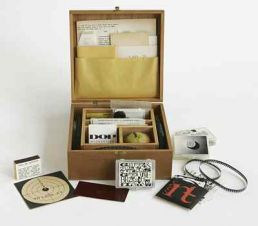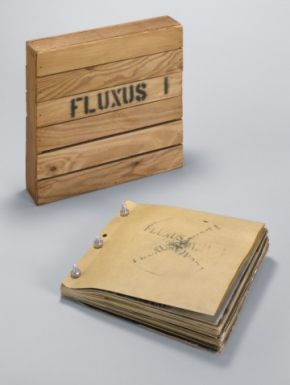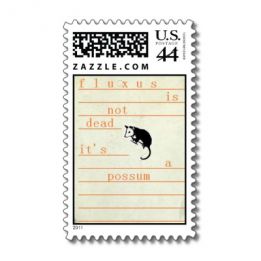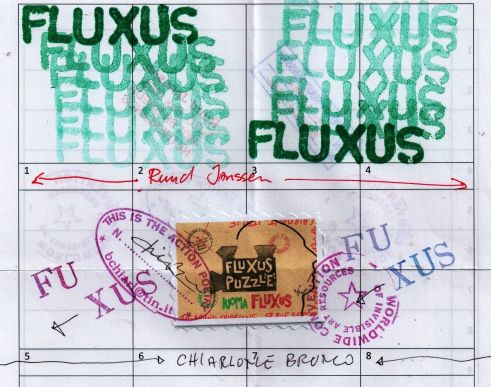Fluxus, from the Latin for 'flow' or 'change' was the name given by the movement's principal organizer George Maciunas to a international group of artists in the 1960s and '70s. Fluxus remains an active movement today, although with new artists and constantly evolving practices. The original Fluxus group worked across a wide range of media, including poetry, music, film, performances, and "events," to question the cultural conception of what is "Art" and the prominence of the individual artist. Under Maciunas's leadership, the concept of the multiple lay at the heart of Fluxus object-making.
From posters, broadsheets, and handbills to stamps, tablecloths, playing cards, and a variety of boxed multiples, Fluxus objects continue to defy easy categorization even within the context of postwar art. In contrast to Pop Art, in which mass culture was imported into the realm of high art, Fluxus attempted the inverse: to integrate the production of art into the realm of everyday experience, often willfully pushing the distinction between the two to its breaking point. The Fluxus approach involves the design and fabrication of inexpensive, theoretically unlimited editions using commercial methods and materials. It often requires the participation of the viewer in order to complete the work.





PARTICIPATION of the VIEWER
MASS CULTURE
REMAINS AN ACTIVE MOVEMENT
EVOLVING
BACK TO SENSORY